Over two years in the making – planning, re-planning, provisioning, testing, packing – the most amazing and perfect astrophotography trip came to fruition in the gloriously dark and clear skies of Chile’s Atacama Desert in early March 2024. I couldn’t have dared to dream that the skies would be so dark and so clear – but they were – six nights of imaging, capturing the beauty of the Southern Hemisphere skies. …and days filled with touring adventures!
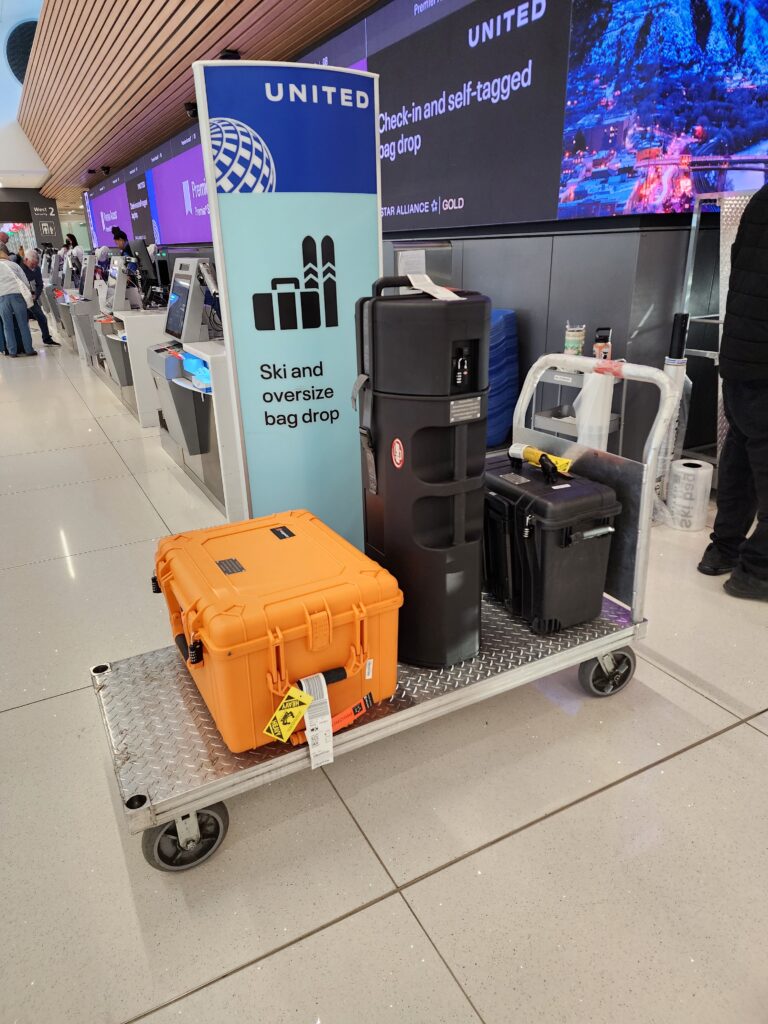
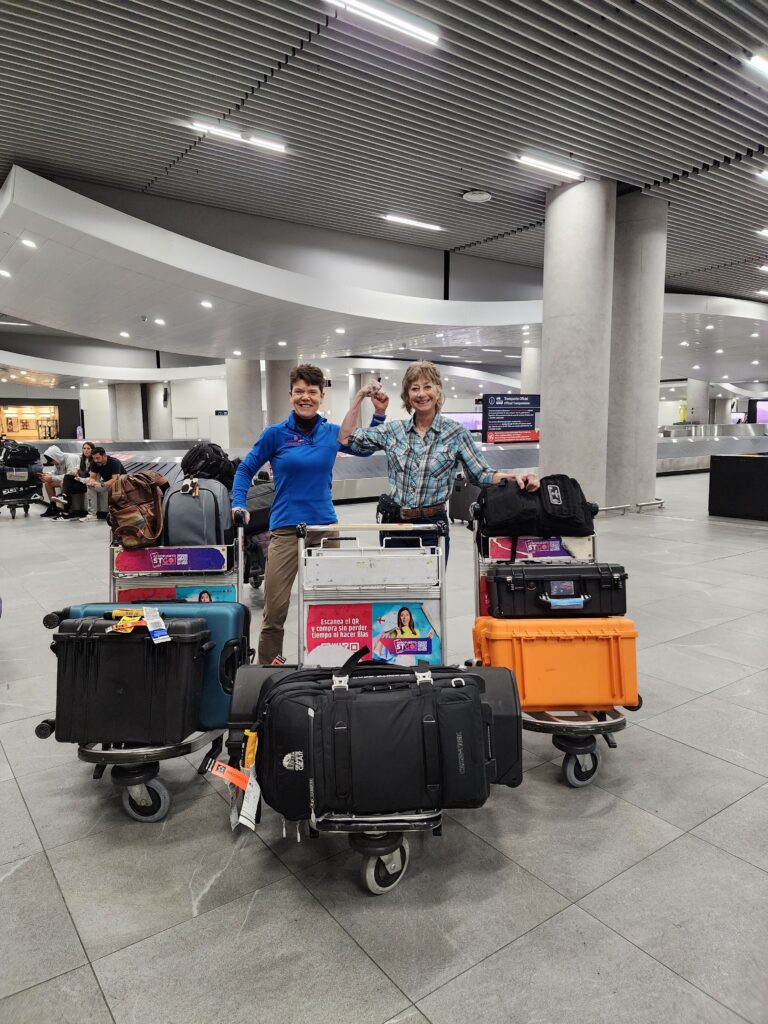

Let the adventure begin
In March 2022, I signed up for an astrophotography workshop in the Atacama Desert scheduled for August 2023. The provisioning* of airplane-transportable gear began, starting with the purchase of the “Southern Cross” – an Askar FRA600 astrograph telescope and Rainbow Astro RST-135E mount (both of which fit nicely in the orange transit box); ending with the gel cell battery – powerful enough to power all my equipment all night long, yet airplane transportable by FAA regulations. Then, as target planning began, came the discovery that while August offers long dark nights in the dead of Southern Hemisphere winter, it does not offer visibility of the unique targets that I was traveling all that way to see and image. Trip re-planning centered around finding times with visibility of the targets in the Southern Hemisphere that are never visible from our Northern Hemisphere venues – Carina, Vela, and Centaurus constellations and their amazing nebulae. February through May give visibility opportunities, with March being the sweet spot between end-of-summer night time darkness and target visibility. So, 5 – 13 March 2024 it was! Paul drove my travel companion, sherpa, and adventure-mate Danita and I to DEN. We flew Denver to Houston to Santiago, cleared customs** in Santiago, flew to Calama, rented a vehicle** from Avis, and drove to the outskirts of San Pedro de Atacama**, checked into the Atacama Lodge***, and began the travel and astrophotography adventure of a lifetime!
* A HUGE THANK-YOU and shout out to Paul for everything his did to make this a reality! I had EVERYTHING I needed for 100% success.
** There was an adventure there – talk to Danita or I for details and perhaps a good laugh “with” us!
***See: https://www.spaceobs.com/en for a description of the MOST amazing place and people on Earth for Celestial Observations!
The imaging adventure short story…
I knew that we were going to a desert known for its astro tourism – so I hoped that I’d have some clear, dark skies. But I didn’t dare to hope that I would have six nights of clear skies – which is exactly what I had! I imaged nine nebulae over the six nights!!
Of course, there were some slow starts – like the greater than two-and-a-half hours that we struggled to find and polar align the mount to the Southern Hemisphere pole star, Sigma Octantis, before we broke down and went searching for the Atacama Lodge owner, Alain Maury, for help. (Alain graciously grabbed his laser pointer and binoculars to come to our rescue. He pointed out the pole star, showed us how to find it, and polar aligned the mount allowing me to image NGC3372 Carina Nebula on the first night of our arrival.
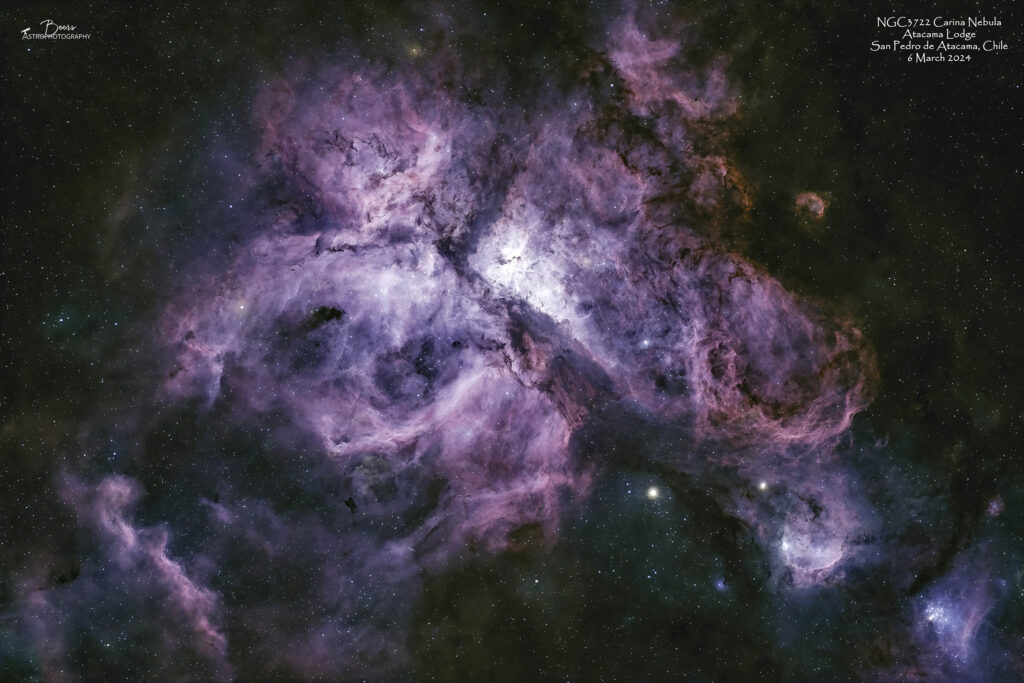
There were also a couple of persistent issues – one in particular that I never solved, but did find a suitable work-around once I convinced myself on Night #3 that it did matter. It was an issue of the mount’s “home” position. In the Northern Hemisphere, with the mount pointed toward the northern pole star, Polaris, the mount parks at the end of a sequence facing the telescope toward the west. In the Southern Hemisphere, with the mount pointed toward the southern pole star, Sigma Octantis, the mount is supposed to park at the end of the sequence with the telescope toward the east. Although, I studied up on how to tell the mount where it was and which parking position to use – it wouldn’t! It continued to park with the telescope facing the west. On Night #3, I ran a short (and what turned out to be a scary) to see if it really mattered and started the sequence with the telescope in it’s west-facing position. It mattered – the mount slewed the telescope around in the wrong direction, wrapping the cables around the tripod, and ended up pointing toward the ground! From then on, I religiously manually slewed the telescope to the easterly facing position before I ended a session – that worked to solve that problem for the rest of the trip.
That same underlying issue (the mount being told it was in the Southern Hemisphere, but not totally bought into the idea) was probably the contributor to the only other issue I had – the mount’s confusion after a meridian flip. On two occasions, the meridian flip executed successfully, but then on the frame after the sequence started up again, I got a prompt asking me if I “would like to wait for the meridian flip time or attempt it now?” No, wait – you’re already on the correct side of the pier – do NOT attempt a meridian flip!! I solved that issue by turning off auto-meridian flip (which I never use anyway) – and that worked for the rest of the trip.
Six nights, nine images – there’s no way to pick a favorite
The full capture story of each of the nine images is included in the gallery pages, which are listed below (or you can just cut to the chase and head to the Nebula Images page: https://beersastrophotography.com/deep_space_objects/nebulae/ where the images are posted in (reverse) chronological order by the day they were captured.
Below are the links to each night’s images, to allow you to quickly access the gallery page that has the target fun facts, capture details, sequence information, and of course the image. Although it’s a little like Sophie’s Choice in picking one or two favorites, I’ve added my other favorites (besides the NGC3372 Carina Nebula that I already posted above) below, along with its link. I’ve also included a thought or two on each targets…
#1. Night#1: 6 March 2024 – NGC3372 Carina Nebula: https://beersastrophotography.com/gallery/ngc3372-eta-carina-nebula/
#2. Night #2: 7 March 2024 – NGC3576 Statue of Liberty Nebula: https://beersastrophotography.com/gallery/ngc3576-statue-of-liberty-nebula/ This is a small target, to which my Southern Cross does not do justice. I may spend some time imaging it next year – with a better framing (i.e., getting it into the center of the frame so that perhaps cropping it will make it appear larger in the frame).
#3. Night #3: 8 March 2024 – IC2944 Running Chicken Nebula: https://beersastrophotography.com/gallery/ic2944-running-chicken-nebula/ Can you see the running chicken??
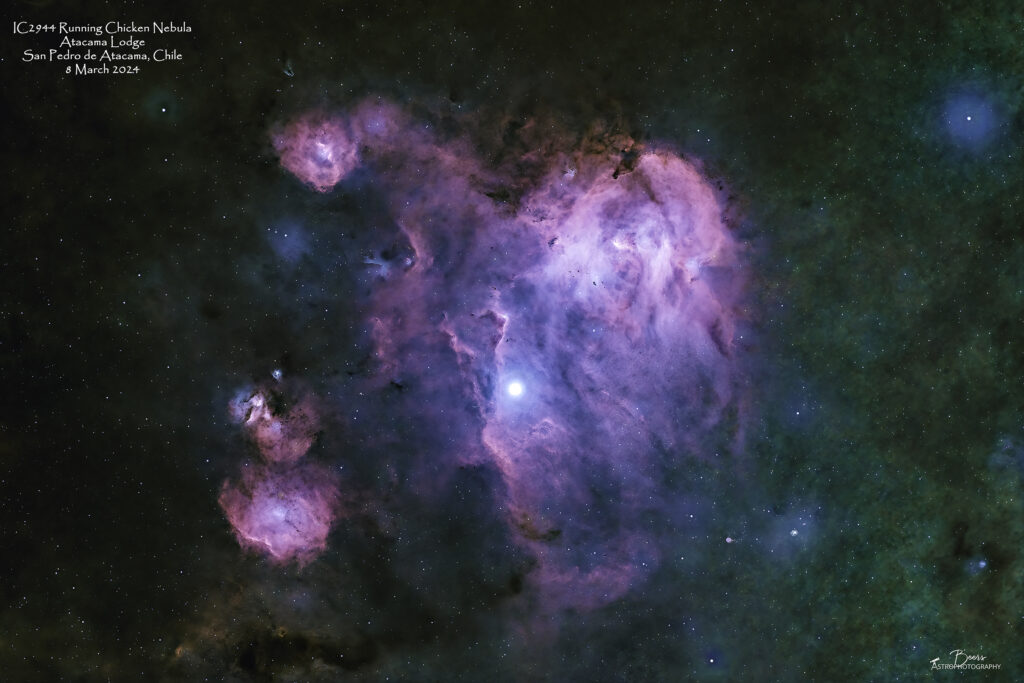
#4. Night #4, Target #1: 9 March 2024 (sunset – ~0200): NGC2070 Tarantula Nebula: https://beersastrophotography.com/gallery/ngc2070-tarantula-nebula/ This object had a bit of sentimental value, because when Alain Maury gave us a “private” star tour (before the real tour group got there later in the evening) – this is the nebula example that we observed through his 45″ telescope!
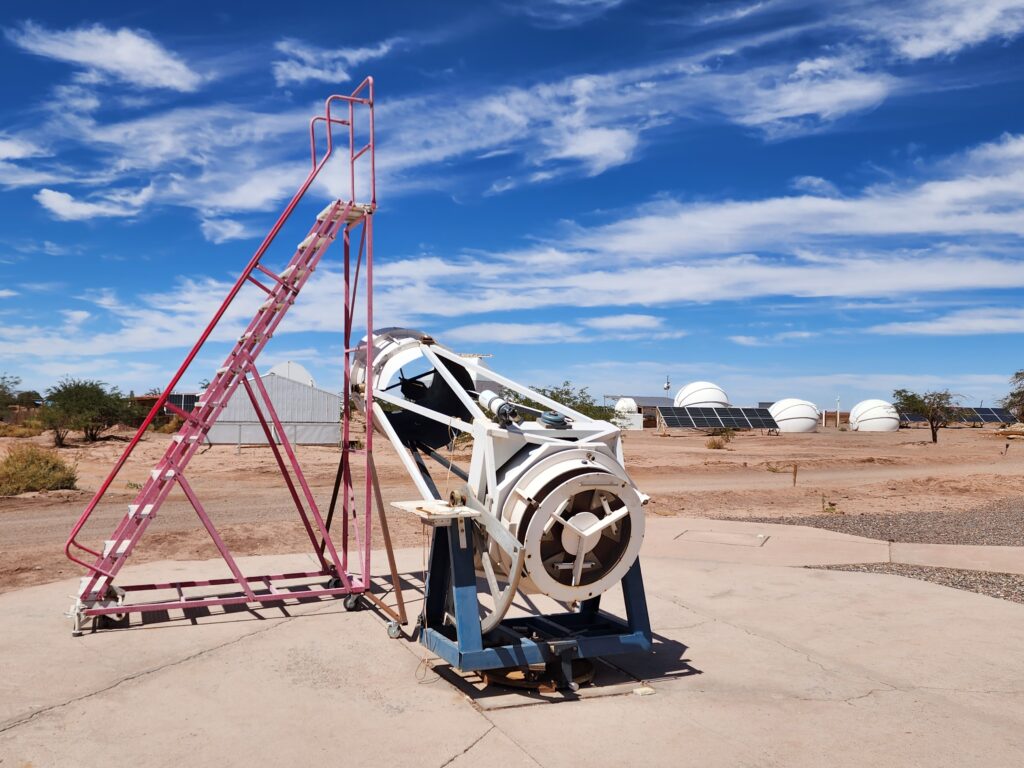
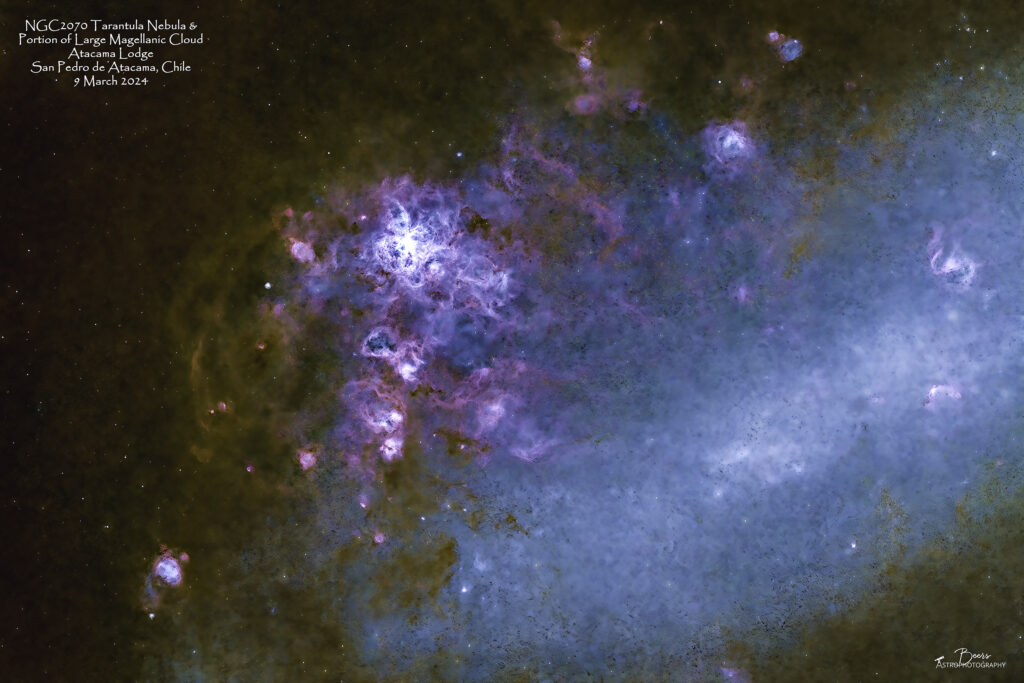
#5. Night #4, Target #1: Night of 9 March 2024 (~0200 – sunrise): NGC6188 Rim Nebula (a.k.a Fighting Dragons of Ara) https://beersastrophotography.com/gallery/ngc6188-rim-nebula-a-k-a-fighting-dragons-of-ara/ This object is one of my favorites – the colors, the image, the thought of celestial dragons fighting over the egg in the south-west portion of the image.
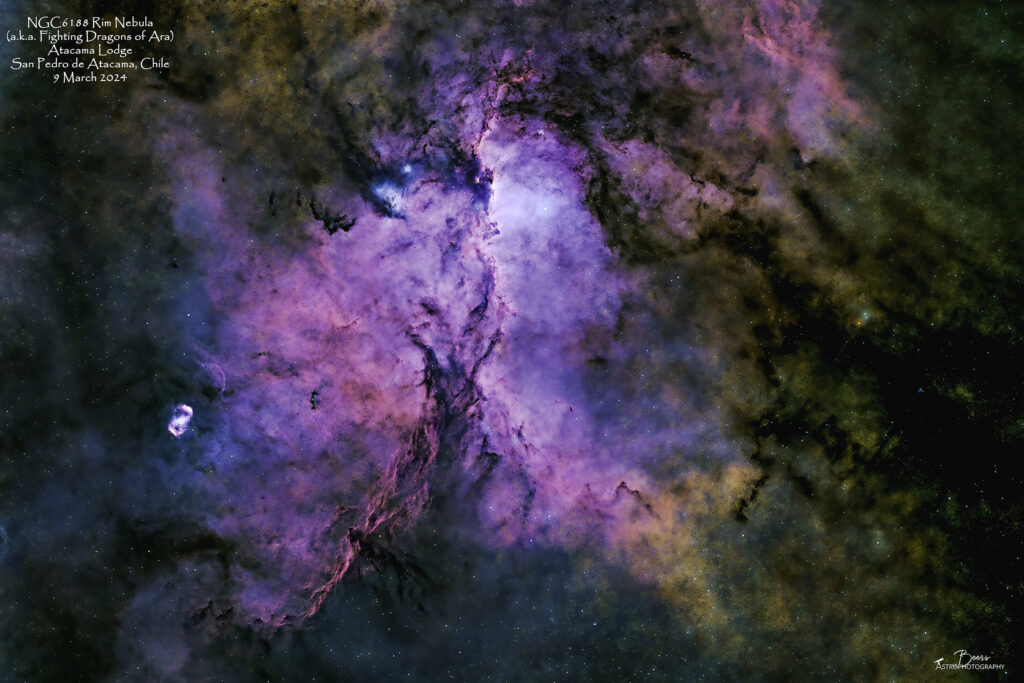
#6. Night #5, Target #1: Night of 10 March 2024 (sunset – ~0400): Vela Supernova Remnant (SNR) Crest and Bridge. https://beersastrophotography.com/gallery/vela-supernova-remnant-snr-crest-bridge/ This object and this region is definitely on my “re-do” list for next year. It is an intriguing area, that I don’t feel like I captured to its potential. The Imaging the Southern Sky authors call the Vela SNR an “astro-imager’s paradise” – I will be spending some time in that paradise on future trips!
#7. Night #5, Target #2: Night of 10 March 2024 (~0400 – sunrise): Carina Group of small nebulae. https://beersastrophotography.com/gallery/carina-group-of-small-nebulae/ Again, a grouping of small nebulae within the Carina constellation that my Southern Cross telescope with its 600mm of focal length does not do justice.
#8. Night #6, Target #1: Night of 11 March 2024 (sunset – ~0200): Vela SNR Spiral Flame. https://beersastrophotography.com/gallery/vela-supernova-remnant-snr-spiral-flame/ Another piece of the Vela SNR that needs more of my time and attention on future trips.
#9. Night #6, Target #2: Night of 11 March 2024 (~0200 – sunrise): IC4592 Blue Horsehead Nebula. https://beersastrophotography.com/gallery/ic4592-blue-horsehead-nebula/ This was a last-minute add (actually while I was beginning to image the night’s first target! IC4592 is visible from the Northern Hemisphere, but it never rises above 20 degrees and demands dark skies. At the Atacama Lodge is was visible essentially directly overhead after it rose above 25 degrees at 0200CDT. This is one of my favorites, for its illusiveness from capture from home, its colors, and the fact that my travel and adventure companion is a horse-woman…so this one was for Danita!

